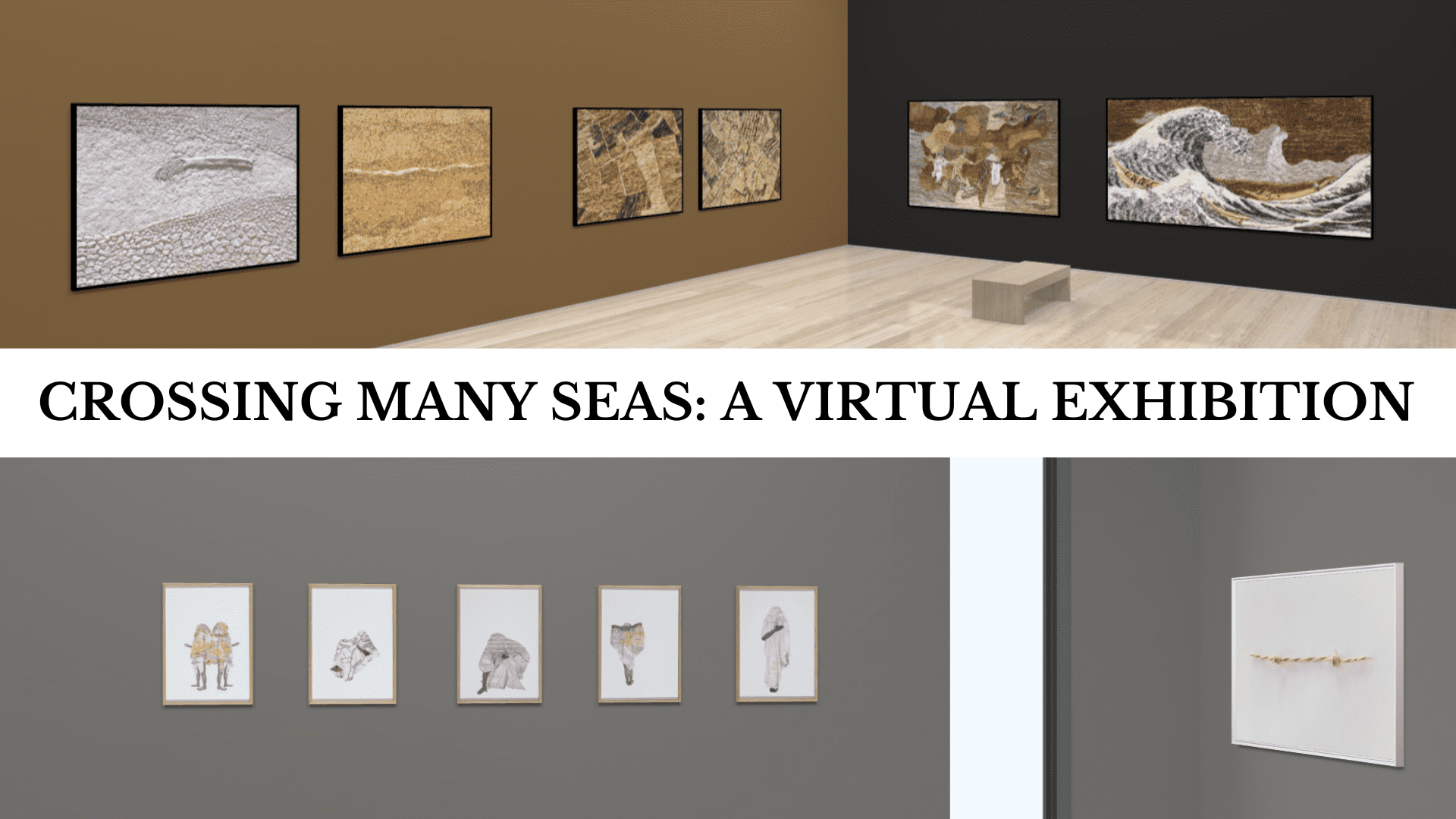The Mittal Institute presents a virtual exhibition titled Crossing Many Seas, featuring Sudipta Das and Ishita Chakraborty, two alumni of the Visiting Artist Fellowship (VAF) program. The Visiting Artist Fellowship – a unique opportunity for mid-career visual artists from around South Asia to spend eight weeks on the Harvard campus – has now hosted more than two dozen artists from India, Pakistan, Nepal, and Bangladesh. The virtual exhibit, ‘Crossing Many Seas’ is an effort to provide continued support for former visiting artists.
‘Crossing Many Seas’ will be open from Friday, March 29 to Tuesday, April 30, 2024, and can be accessed through the link below.
Curated by New Delhi-based curator and scenographer Reha Sodhi, the exhibit symbolizes the profound journeys undertaken by individuals across physical and metaphorical seas, navigating the complexities of migration, identity, and belonging. Through evocative artworks, viewers are invited to embark on a reflective journey of exploration and discovery, traversing the diverse landscapes of human experience.

The exhibition is aptly titled ‘Crossing Many Seas’ to encapsulate the multifaceted themes explored by the two young artists, Sudipta Das and Ishita Chakraborty, whose experience through the fellowship has furthered their creative studies. Through their works, the artists delve into the complexities of human migration, emphasizing the interconnectedness of diverse experiences across geographical boundaries. Despite this commonality, each artist explores a wider spectrum of human experiences in a world affected by shifting political and economic circumstances and the devastation caused by climate change. The artists bring their unique perspectives to the concept of migration, shedding light on the profound impact it has on identity, culture, and memory.

(Left) “Zwischen I Between” – Ishita says, “In recent times, I met a group of Pakistani and Afghani refugees in Switzerland, and every time we meet, we talk about home, common recipes, rivers, and landscapes. I inscribed our exilic longings into the beloved river Jhelum flowing into the paper without any geographic territories and conflicts.” (Right) Ishita Chakraborty
“I am interested in listening. I listen to people’s stories and try to inscribe them on paper by scratching them. They are like scars – scars of loss, longing, and trauma that people have gone through,” shares Ishita Chakraborty when asked about the motivation behind her art. Ishita expresses migration narratives, colonial legacies, and the complexities of language and identity across various mediums including inkless drawings, installations, poetry, video, and sound.

(Left) Sudipta Das. (Right) “Crossing Over” – “A large number of people walk in single file across a bridge or plank, holding their meager possessions, toward an uncertain future where they will begin life anew,” says Sudipta.
Sudipta Das, a mixed-media visual artist, delves into profound narratives using unconventional paper techniques. Her art focuses on the idea of bearing witness to intimate socio-political issues, the impacts of climate change, and the dynamics of human migration. “When we look at memory, we always see memory through a document, photograph, or some form of paper. So, I use a similar material that has that power. Using paper, I try to bring all the emotions we all feel and at the same time my personal situation as well as the situation of my surroundings through my work,” expresses Sudipta about the inspiration driving her artwork.
☆ The views represented herein are those of the interview subjects and do not necessarily reflect the views of LMSAI, its staff, or its steering committee.
